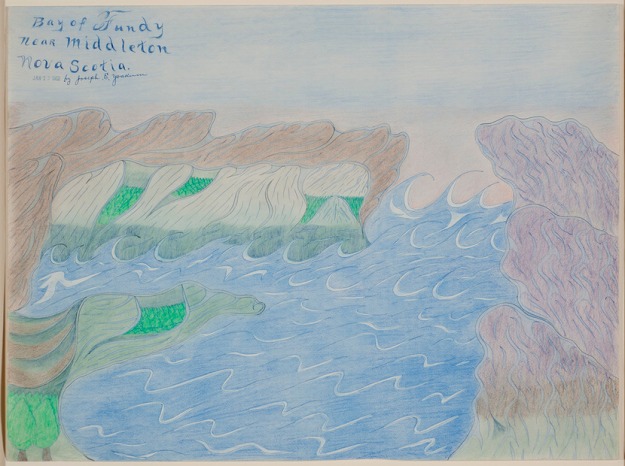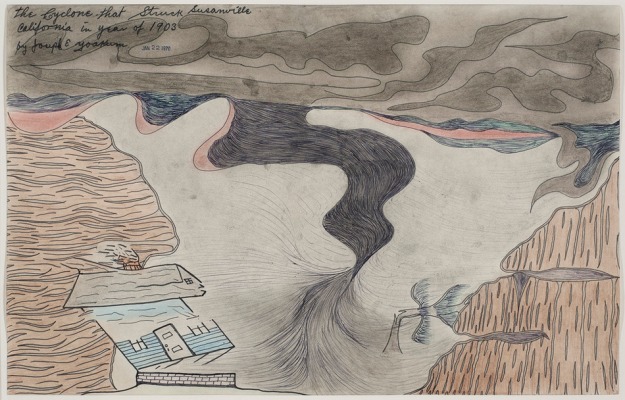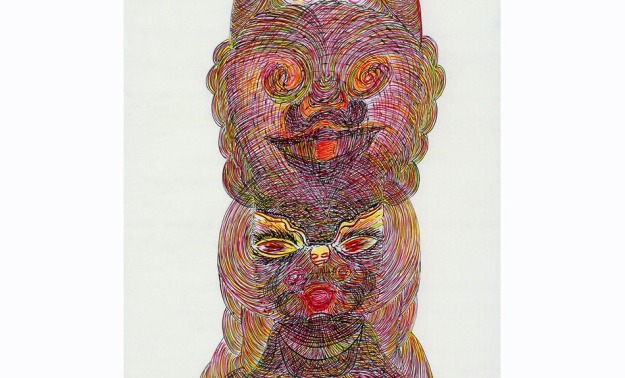
Frank Walter, Woman and Giant Bird, oil on photographic paper
, 25.2 x 20.2 cm
Interest in outsider art is reflected in current and recent shows world-wide. Forrest Bess (see earlier painttube post here) is subject of a retrospective at the Hammer Museum, Frank Walter showed recently at Douglas Hyde Gallery Dublin, and two outsider artists are included in this years Carnegie International.
Like Bess, the Antiguan artist Frank Walter, lived in isolation and followed a deeply personal vision. The small DHG show, presented with the support and assistance of Ingleby Gallery, Edinburgh, made a big impression. The works appear to be the result of an urgent and intuitive need to communicate, and were popular with painters, I think, because they avoid mannerism and cleverality.

Frank Walter, Woman and Giant Bird, oil on photographic paper,
25.2 x 20.2 cm
The 2013 Carnegie International features work by Guo Fengyi and Joseph Yoakum. Click on the names to go directly to their pages on Carnegie website. The image at bottom is from the Frieze Art Fair via Long March Space.

Joseph Yoakum, Bay of Fundy near Midleton Nova Scotia, 1966, pencil and ballpoint pen on paper, 18×24 in

Joseph Yoakum, The Cyclone that Struck Susanville California in Year of 1903, 1970, pencil, ballpoint and felt pens on paper, 12×9 in.

Guo Fengyi, detail of Huaxu Family, 1996, colored ink on rice paper, 244 1⁄8 x 27 9⁄16 in. (620 x 70 cm)

Guo Fengyi, Avalokiteshvara, 68.2 x 189 cm.
Posted by Robert Armstrong



















